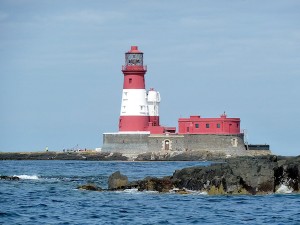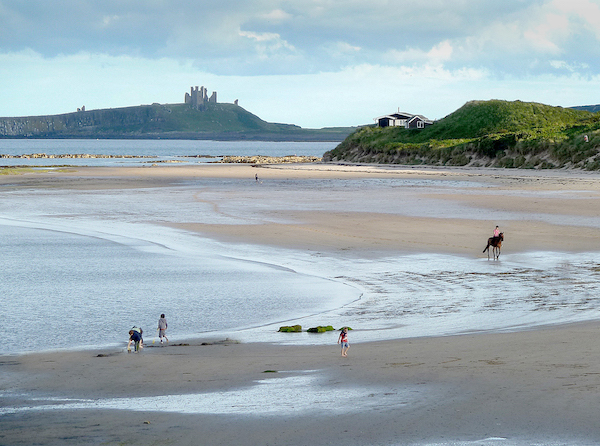A long way from anywhere else, particularly by yacht, but that’s part of its charm. Space and emptiness, long, sandy and relatively unpopulated beaches, commanding cliffs and clean air. Worth parking the boat (the Royal Northern YC at Blyth has a good marina) and taking to boots, bike or, if you must, car.
Sailing up the coast, the view is dominate d by three great castles – the fascinatingly ruined towers of Dunstanburgh (close to Craster, famed for its kippers) and then the substantial and well-preserved bulk of Bamburgh. The latter has links to Lord Armstrong, shipbuilder and innovator, and an excursion inland to his Arts and Crafts home Cragside expands the picture.
The prominent 16th-century Lindisfarne Castle also benefited from an Arts and Crafts makeover, by Sir Edwin Lutyens for Edward Hudson, owner of Country Life magazine. Lutyens also introduced the vernacular-looking sheds made from upturned boats.
Offshore, the Farne Islands feature seals, seabirds (including puffins in season) and St Cuthbert – his chapel on Inner Farne is a delight – as well as fabulous views back to Bamburgh and the hills of the mainland.
The red-and-white 1826 Longstone Lighthouse is the one from which Grace Darling, whose father was the lighthouse keeper, set out on her heroic rescue in 1838. Her tomb in Bamburgh churchyard is a sight to behold, and the museum opposite, run by the RNLI, well worth a visit. 
The Farnes, being run by the National Trust, are probably best accessed by ferries from Seahouses, but Lindisfarne (aka Holy Island) some five miles further north, and linked to the mainland by a tidal causeway, offers sheltered anchorage to the south of the island.
As well as the Royal Northumber-land YC, marinas are available at Amble, and the Royal Quays at the mouth of the Tyne is handy for exploring Newcastle.
Words and photos: Peter Willis
Main photo: Dunstanburgh Castle on the skyline, seen from Low Newton
Right: Longstone Lighthouse, Farne Islands, former home of Grace Darling.


